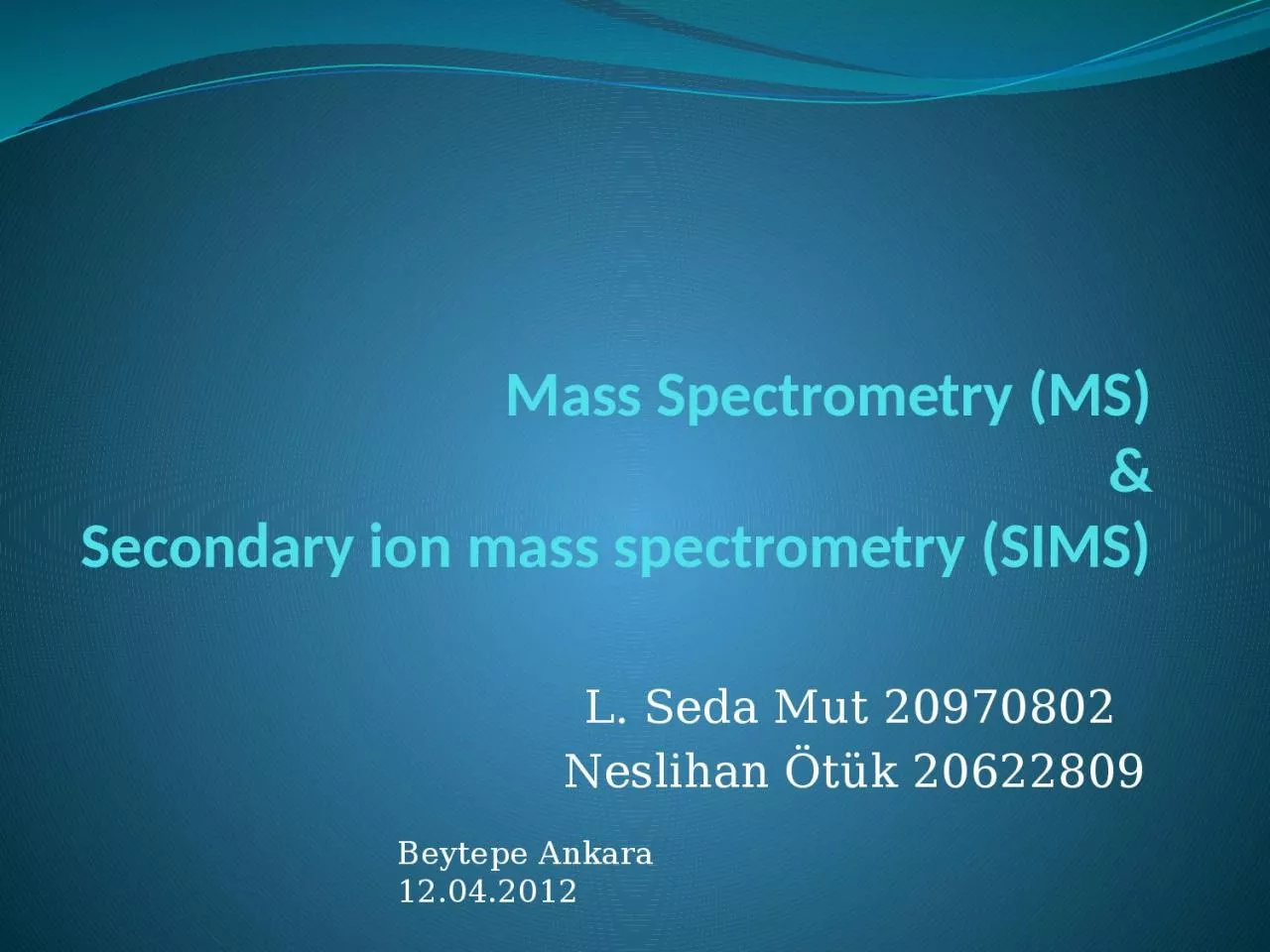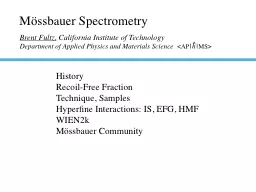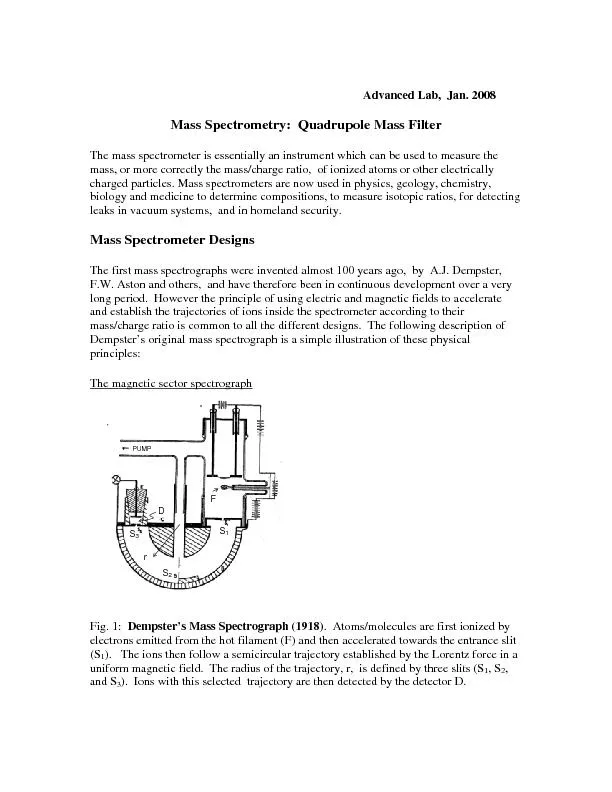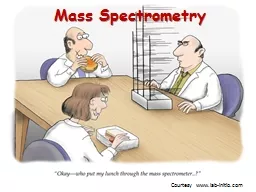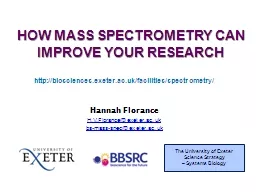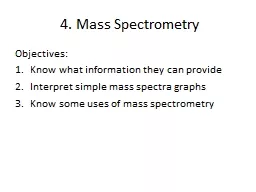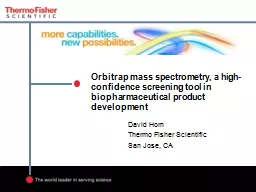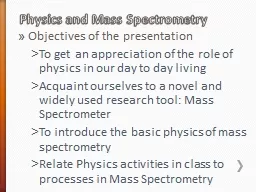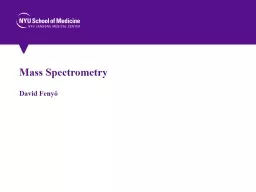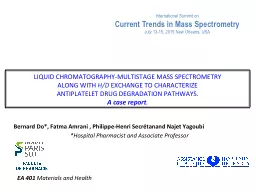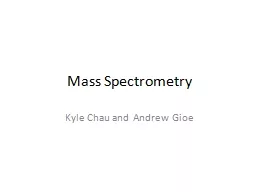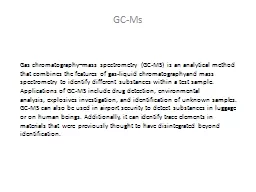PPT-Mass Spectrometry (MS)
Author : elena | Published Date : 2022-06-15
amp Secondary ion mass spectrometry SIMS L Seda Mut 20970802 Neslihan Ötük 20622809 Beytepe Ankara 12042012 Outline Historical Background of MS and SIMS
Presentation Embed Code
Download Presentation
Download Presentation The PPT/PDF document "Mass Spectrometry (MS)" is the property of its rightful owner. Permission is granted to download and print the materials on this website for personal, non-commercial use only, and to display it on your personal computer provided you do not modify the materials and that you retain all copyright notices contained in the materials. By downloading content from our website, you accept the terms of this agreement.
Mass Spectrometry (MS): Transcript
Download Rules Of Document
"Mass Spectrometry (MS)"The content belongs to its owner. You may download and print it for personal use, without modification, and keep all copyright notices. By downloading, you agree to these terms.
Related Documents

